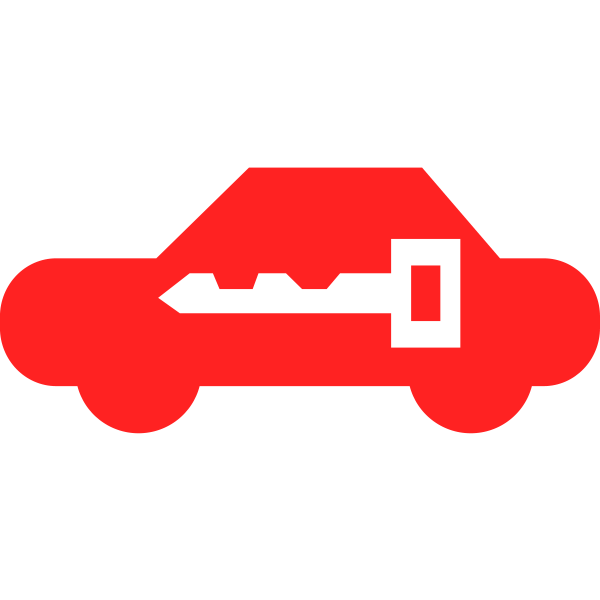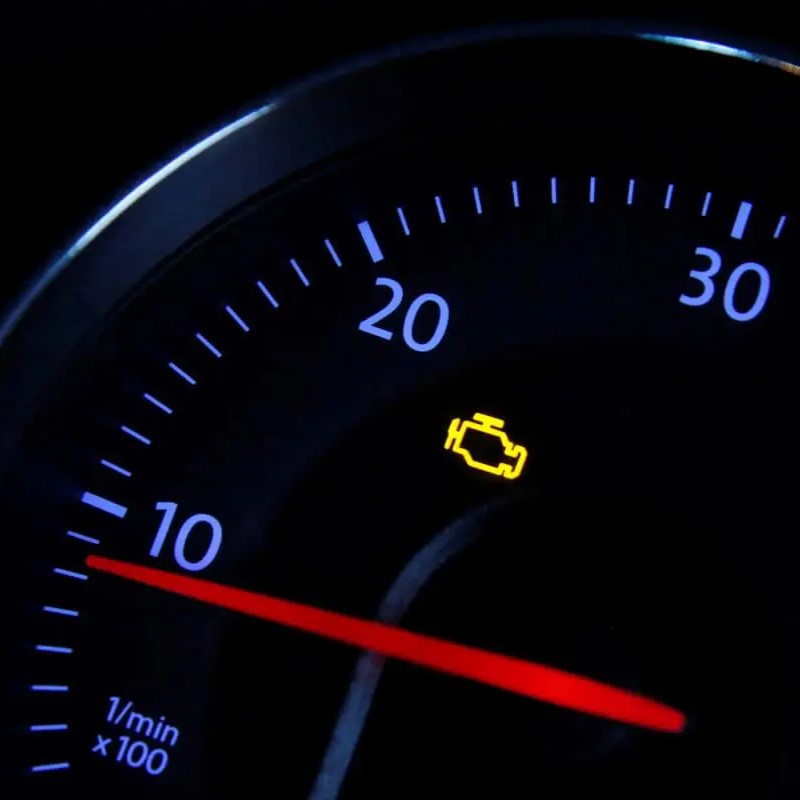Have you ever glanced at your car’s dashboard and seen a peculiar symbol – a triangle with an exclamation point inside? It’s a common sight that can spark anxiety in even the most seasoned drivers. This light, often referred to as the “master warning light” or “general warning light,” is essentially a catch-all alert, signaling that something is amiss within your vehicle’s complex systems.
Unlike other specific warning lights that pinpoint a particular issue, like the oil pressure light or brake warning light, the triangle with an exclamation point is more of a general call to attention. It’s like a car’s version of a “check engine” light, but broader in its implications.
What Causes the Triangle with Exclamation Point to Light Up?
The triangle with an exclamation point light can be triggered by a variety of problems, ranging from minor inconveniences to serious safety hazards. Here are some common culprits:
- Tire pressure issues: Low tire pressure can activate this light. Driving on underinflated tires can reduce fuel efficiency, affect handling, and increase the risk of a blowout.
- Brake system problems: Issues with brake pads, rotors, calipers, or fluid levels can illuminate the light. This is a serious concern as your vehicle’s braking ability is compromised.
- Vehicle stability control malfunctions: This system helps maintain control during slippery conditions. If it’s not working properly, the light might come on.
- Electrical system problems: Battery issues, alternator failures, or problems with other electrical components can trigger the light.
- Emissions system issues: Problems with your car’s emissions system can cause the light to appear. This can lead to failed emissions tests and potential engine damage.
It’s important to note that this list is not exhaustive. Other factors, such as faulty sensors or computer glitches, can also cause the light to illuminate.

How to Respond to the Triangle with Exclamation Point Light
When you see the triangle with an exclamation point light, it’s crucial to remain calm and take immediate action. Here’s what you should do:
- Check the owner’s manual: Your car’s owner’s manual provides specific information about the warning lights, including potential causes and recommended actions.
- Scan for additional warning lights: Often, the triangle with an exclamation point light is accompanied by other lights that provide more specific clues about the problem.
- Pull over safely: If the light is accompanied by a red warning light or if you experience any unusual symptoms, pull over to a safe location as soon as possible.
- Inspect for obvious issues: Check for low tire pressure, brake fluid leaks, or other visible problems.
- Consult a mechanic: If you can’t identify the problem or if the issue seems serious, it’s best to have your car inspected by a qualified mechanic.

Preventing the Triangle with Exclamation Point Light
While you can’t always prevent the triangle with an exclamation point light from appearing, regular car maintenance can significantly reduce the chances of encountering this troublesome warning.
- Adhere to recommended service intervals: Follow your car’s maintenance schedule to ensure that all essential components are checked and replaced as needed.
- Monitor tire pressure regularly: Check your tire pressure at least once a month, or more frequently in cold weather.
- Inspect brake system components: Regularly examine your brake pads, rotors, and calipers for signs of wear.
- Be mindful of warning signs: Pay attention to any unusual noises, smells, or vibrations that might indicate an underlying problem.
The Importance of Prompt Action
Ignoring the triangle with an exclamation point light can lead to more serious problems and potentially dangerous situations. By taking prompt action and addressing the underlying issue, you can protect yourself, your passengers, and your vehicle.
Remember, prevention is key. Regular car maintenance and being attentive to your vehicle’s behavior can help you avoid the stress and inconvenience of dealing with the triangle with an exclamation point light.
Outline of various potential issues that may be causing the warning
Tire-Related Issues
- Low tire pressure
- Tire sensor malfunction
- Tire pressure monitoring system (TPMS) failure
Brake System Issues
- Worn brake pads or rotors
- Low brake fluid level
- Brake system leaks
- Anti-lock brake (ABS) system malfunction
Electrical System Issues
- Battery problems (weak or dead battery)
- Alternator failure
- Issues with electrical components (sensors, relays, fuses)
Vehicle Stability Control (VSC) Issues
- Faulty VSC sensors
- VSC system malfunction
Emissions System Issues
- Oxygen sensor failure
- Catalytic converter problems
- Mass airflow sensor issues
- Exhaust system leaks
Other Potential Issues
- Steering system problems
- Suspension issues
- Transmission problems
- Computer system glitches

Tips for addressing potential issues and seeking professional assistance
The triangle with exclamation point light can signal a wide range of issues. It’s essential to assess the situation accurately to determine the appropriate course of action.
- Immediate Safety Concerns: If the light is accompanied by unusual noises, vibrations, smoke, or fluid leaks, or if the vehicle is handling poorly, pull over to a safe location and call for assistance immediately.
- Minor Issues: If the light comes on intermittently and there are no obvious symptoms, you might be able to safely drive to a mechanic. However, it’s still advisable to schedule an appointment as soon as possible.
Tips for Seeking Professional Assistance
Choosing the right mechanic is crucial. Here are some tips:
- Recommendations: Ask friends, family, or coworkers for recommendations.
- Online Reviews: Read reviews of local mechanics to get a sense of their reputation and customer satisfaction.
- Certifications: Look for mechanics with certifications from reputable organizations like the National Institute for Automotive Service Excellence (ASE).
- Transparency: Choose a mechanic who is upfront about the problem, provides clear explanations, and offers a detailed estimate.
- Warranty: Inquire about the warranty on parts and labor.
Common Issues and Potential Solutions
While it’s impossible to cover every possible scenario, understanding some common issues can help you make informed decisions.
- Tire Pressure: If the light is due to low tire pressure, simply inflate the tires to the recommended pressure. However, if the light persists, there might be a leak or a sensor issue.
- Brake System: Brake problems can range from worn pads to fluid leaks. A mechanic will inspect the entire system to identify the root cause.
- Vehicle Stability Control: Malfunctions in this system can be caused by faulty sensors or other electrical issues. A diagnostic scan can help pinpoint the problem.
- Electrical System: Battery issues, alternator problems, or other electrical malfunctions can trigger the light. A mechanic can test the electrical components to identify the culprit.
- Emissions System: Problems with the emissions system often require specialized diagnostics and repairs.
Preventive Maintenance
Regular car care can help prevent many issues that trigger the triangle with exclamation point light.
- Follow the Maintenance Schedule: Adhere to the recommended service intervals outlined in your owner’s manual.
- Check Fluids Regularly: Monitor engine oil, brake fluid, and coolant levels.
- Inspect Tires: Regularly check tire pressure and look for signs of wear or damage.
- Listen for Unusual Noises: Pay attention to any strange sounds that might indicate a problem.
By understanding the potential causes of the triangle with exclamation point light, taking appropriate actions, and prioritizing preventive maintenance, you can minimize the inconvenience and potential risks associated with this warning.
Additional Tips
- If you frequently encounter the triangle with an exclamation point light, consider keeping a record of the circumstances surrounding each occurrence. This information can be helpful when diagnosing the problem.
- Stay informed about your car’s warning lights. Understanding what each light means can help you respond appropriately in case of an emergency.
- Invest in a quality OBD-II scanner. These devices can help you read and clear trouble codes, providing valuable insights into your car’s health.
By following these guidelines, you can navigate the world of car warning lights with confidence. And remember, when in doubt, it’s always better to err on the side of caution and seek professional help.





